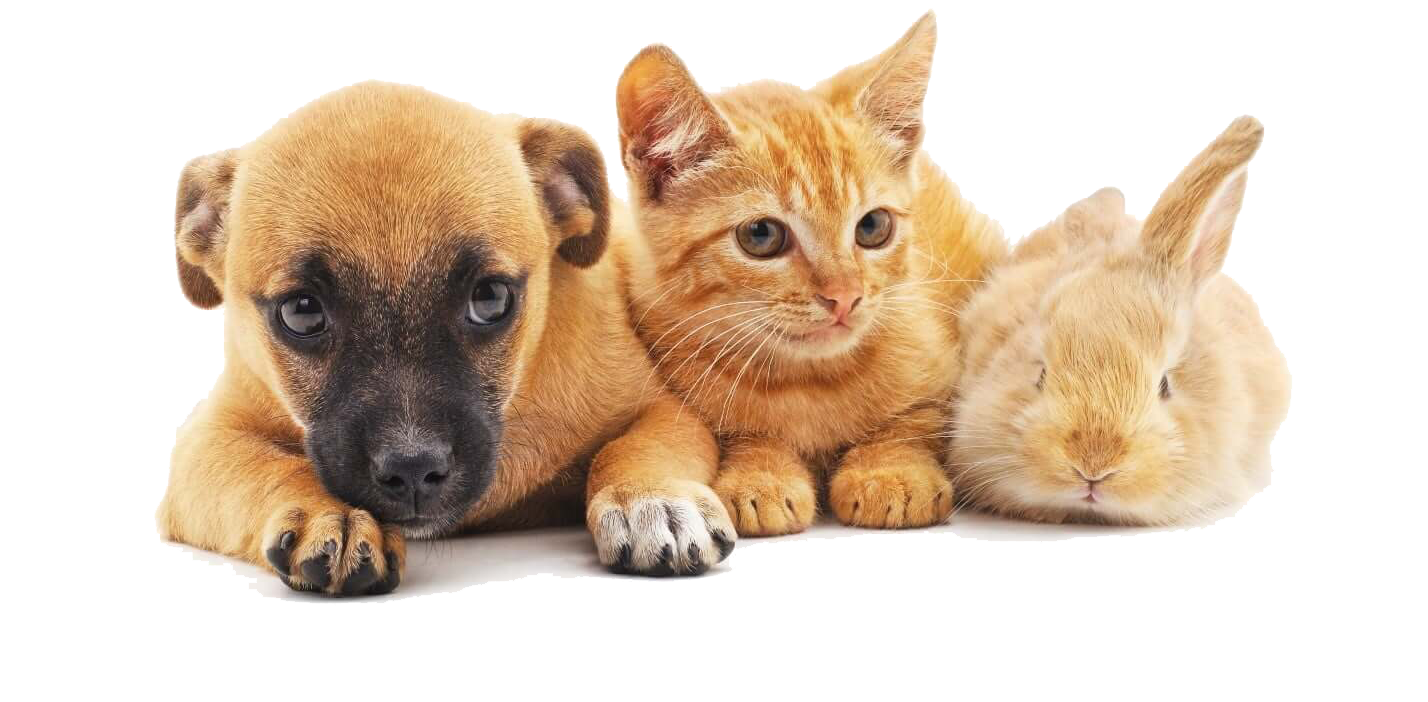Panel discussion on...
Pet food
Natalie Rainer (1)
K&L Gates LLP, San Francisco, United States

Member of AgroFOOD Industry Hi Tech's Scientific Advisory Board
The evolving landscape of pet food: ingredients, claims, and cost
Commentary article
Consumer food preferences have dramatically evolved over the past 20 years, and in more recent years, many of the same trends have extended into the pet food space. It is no longer assumed that consumers are seeking the cheapest choice for their pets. While cost will always be a major determinant of consumer choice, the healthfulness of pet food is an ever-increasingly important consideration for pet owners. In a 2019 study of pet food purchasing trends, the top statement with which 2,181 pet owners agreed was “I want to provide my pet with the best nutrition possible,” whereas the sixth most popular statement was “I always try to get the best quality for the best price when buying pet food” (2). The European market provides stiff competition to manufacturers who are supplying pet food (3). Manufacturers have focused on claims such as grain-free, organic, and natural, which are highly attractive in the European pet food market (4). With pet owners willing to pay premium prices for healthful pet foods (5), it is helpful to take a step back to consider the unique regulatory considerations for pet food that shape the nutritional value of pet food, which dovetail with many of the topics that this issue’s panelists have also covered.
“Part of a balanced diet”: the difference with pet food
Modern consumers are now well acquainted with the concept of a “balanced diet” consisting of fruits and vegetables, grains, proteins (meat/poultry/fish), and other food groups (6). These frameworks take into account the variety of options that individual consumers have when making decisions about food. Given the potential variability in individual consumption habits, assessing the safety of human food (particularly in countries with diverse populations) can be challenging and require the development of detailed food consumption data, such as the National Health and Nutrition Examination Survey in the United States or the European Food Safety Authority Comprehensive European Food Consumption Data base in the European Union (7, 12).
Thankfully, when considering animal feed (including pet food), the mystery of the daily diet disappears. Pet food is not “part of a balanced diet.” It is the balanced diet that the pet is assumed to consume every meal, every day for the pet’s entire life. Therefore, all pet food must include the minimum of the macro- and micronutrients required for the pet to be healthy.
Innovation in Pet Food
In the past, the standards ensuring uniform nutritional requirements for pet food seemed to stifle innovation, but after decades of almost-identical choices from a handful of brands, consumers have seen a rapid proliferation of brands. Each of these brands is competing for a share of the US$137 billion global pet food market (8), and the stakes are high. A pet food customer may purchase the same product on a regular basis for a pet’s entire life of 10 years or more, a purchasing pattern that would be extremely rare in the human food context apart from certain staples that garner a high degree of brand loyalty.
Given that pet food products are in theory nutritionally equivalent and ideal for the pet, how do individual brands compete for consumers? Increasingly, competition is based on claims regarding the quality of ingredients, as well as claims that human owners seek on their own foods (9, 13).
Much of the battle for customers is waged based on the ingredients of pet food. High-quality ingredients are increasingly seen as a strong indicator of healthfulness, and like the human food sector, there is a premium price for products with premium ingredients.
Many of our panelists this issue have commented on the importance of ingredients to consumers. Giulia Candotti of Italfeed aptly points out that human food trends increasingly permeate the pet food space. Claims ranging from “superfood” ingredients to clean label (e.g., “natural,” “no artificial preservatives,” minimal additives) to omega-3 fatty acid content have long existed for human foods and are increasingly making their way onto pet food labels.
Panelist Henriette Bylling of Aller Petfood Group has questioned the hidden “costs” of moving toward higher-quality, human-grade ingredients. Animal feed, including pet food, has long been a destination for less-than-human-grade ingredients that still offer nutrition. Bylling reminds us that domesticated animals were traditionally fed with table scraps until the modern era of commercial pet food. When considering the various methods of capturing nutrition from the meat and poultry industries by using byproducts that are unappealing or unfit for human food use (e.g., rendered ingredients, poultry meal), it is important to recognize that the sustainability narrative around these ingredients that would otherwise be discarded. To the extent that pet food moves towards higher quality, are we losing ground in terms of sustainability?
Samanta Correale of GS1 Italy notes that environmental-related claims remain very important to the same consumers who are seeking healthful/high-quality pet foods. Among the 13 specific claims considered, the most popular both by sales trend and by value of sales were related to “sustainability” claims, “organic” claims, and “GMO-free” claims. Claims regarding animal welfare and marine sustainability also scored high.
Animal feed, including pet food, is also an area where innovative ingredients can find a foothold. For example, the consumer interest in animal-friendly options (even animal-free options) dovetails with Giulia Candotti’s perspective on pet food being a potential end use for novel protein ingredients, from algae to cell-based meat as a replacement for animal-derived proteins. Nicholas Hamelin and Sean Madison of Innovafeed dive more deeply into the potential for insect-derived protein and fat to contribute to high-quality, nutritious ingredients for pet food that have comparatively low carbon emissions and water use when compared to ingredients such as poultry and fish meal. Use of novel ingredients such as black soldier fly larvae could offer companies who have made ambitious commitments to reduce environmental impacts a means to achieve their goals. While a consumer may not be interested in consuming such ingredients in their own diets, perhaps they would consider their pets’ diets as a way to explore these novel ingredients.
While perhaps less front-of-mind to consumers, there are quality issues that remain of utmost importance to manufacturers, such as microbial safety. An ingredient’s contamination with a pathogen can lead to a recall costing many millions of dollars. In this regard James Peterson of Pet Food Solutions discusses a new technology for reducing Salmonella contamination of chicken fat through a refining process. Lindsay Meyers of Primal Pet Foods also discusses the use of probiotics to produce environments that are hostile to pathogen growth in dry pet food. While this ingredient quality issue is perhaps not top-of-mind to consumers, we imagine that these manufacturer-focused quality claims are highly appealing to the industry.

Conclusion
The increasing level of competition in the pet food industry presents manufacturers with opportunities and choices in terms of promoting ingredient quality and environmental impact attributes. From selecting high-cost, human-grade ingredients to choosing lower-cost, lower-environmental impact ingredients to all the variations in between, the potential for variation in product composition—and cost—is significant. Ultimately, the market will decide which factors are most relevant to consumers. Until recently, it appeared that consumers were quite tolerant of high prices for premium pet food, but in light of changing economic conditions, this may be changing. In Europe, high pet food costs in some markets have led owners to switch to cheaper pet foods, resulting in declining pet food revenues (10). According to the Wall Street Journal, inflation in the United States has led to an 11% increase in 2023 compared to 2022, and growth for premium pet food had slowed in the second quarter of 2023, as compared to the first quarter of 2023 and the fourth quarter of 2023 (11). Increasing cost sensitivity and declining sales for premium foods could lead to a swing back to at least some of the cheaper ingredients that have historically been popular in pet food.
References and notes
References and notes
- The author is grateful for the assistance of Elisabeth Bulzomi on this article.
- Molly Schleicher, et. al., Determinants of pet food purchasing decisions, CAN. VET. J. (2019). The article was published in the Canadian Veterinary Journal, but the survey appears to have been conducted on American pet owners.
- Opportunities in the European Pet Care Market, EURODEV (July 27, 2023), https://www.eurodev.com/blog/opportunities-in-the-european-pet-care-market#:~:text=The%20European%20region%20provides%20stiff,foods%2C%20snacks%2C%20and%20treats
- Id.
- In some countries in Europe, pet food is considered a premium product segment. Europe Pet Food Market Overview 2022-2027 released, PetFoodIndustry (Oct. 21, 2022), https://www.petfoodindustry.com/news-newsletters/pet-food-press-releases/press-release/15469254/europe-pet-food-market-overview-2022-2027-report-released
- See Food-based dietary guidelines, FOOD AND AGRICULTURE ORGANIZATION OF THE UNITED NATIONS (2023), https://www.fao.org/nutrition/education/food-dietary-guidelines/regions/en/ (a collection of food-based dietary guidelines compiled by the Food and Agriculture Organization of the United Nations).
- See National Health and Nutrition Examination Survey, CENTERS FOR DISEASE CONTROL AND PREVENTION (2023), https://www.cdc.gov/nchs/nhanes/index.htm
- Nicole Kerwin, Global pet food market on track to $137 billion, Pet Food Processing (Apr. 14, 2023), https://www.petfoodprocessing.net/articles/16872-global-pet-food-market-on-track-to-137-billion
- See, e.g., Joe Pinsker, The Humanification of Pet Food Is Nearly Complete, The Atlantic (Oct. 26, 2018), https://www.theatlantic.com/family/archive/2018/10/pet-food-organic-gmo/574060/
- Vladislav Vorotnikov, Inflation weighs on pet food consumption in Eastern Europe, PetfoodIndustry (May 12, 2023), https://www.petfoodindustry.com/pet-food-market/article/15469815/inflation-weighs-on-pet-food-consumption-in-eastern-europe
- Jennifer Williams-Alvarez, Pet Owners Resort to Cheaper Food as Inflation Weighs on Wallets, Wall Street Journal (Sept. 12, 2023), https://www.wsj.com/articles/pet-owners-resort-to-cheaper-food-as-inflation-weighs-on-wallets-a164333c
- The EFSA Comprehensive European Food Consumption Database, European Food Safety Authority (2018), https://data.europa.eu/data/datasets/the-efsa-comprehensive-european-food-consumption-database?locale=en
- The EFSA Comprehensive European Food Consumption Database, European Food Safety Authority (2018), https://data.europa.eu/data/datasets/the-efsa-comprehensive-european-food-consumption-database?locale=en
References and notes
- Arenas-Jal M, Suñé-Negre JM, Pérez-Lozano P, García-Montoya E. Trends in the food and sports nutrition industry: A review. Critical Reviews in Food Science and Nutrition. 2020;60(14):2405-21.
- Angus A. Top 10 Global Consumer Trends for 2018: Emerging Forces Shaping Consumer Behaviour: Euromonitor International; 2018 (Available from: https://tourismaccommodation.com.au/wp-content/uploads/2018/03/Top10-Global-consumer-trends-for2018.pdf.
- Labrecque LavdE, Jonas and Mathwick, Charla and Novak, Thomas and Hofacker, Charles. Consumer Power: Evolution in the Digital Age. Journal of Interactive Marketing 2013;27.
- Dunford M. Fundamentals of Sport and Exercise Nutrition 2010.
- Galaz GA. Chapter 20 - An Overview on the History of Sports Nutrition Beverages. In: Bagchi D, Nair S, Sen CK, editors. Nutrition and Enhanced Sports Performance. San Diego: Academic Press; 2013. p. 205-10.
- Bird SP. Creatine supplementation and exercise performance: a brief review. J Sports Sci Med. 2003;2(4):123-32.
- Schofield L. Vitamin Retailer The Dietary Supplement Industry Leading Magazine 2022 (Available from: https://vitaminretailer.com/activating-your-fitness-nutrition-department/.
- Newman JI, Xue H, Watanabe NM, Yan G, McLeod CM. Gaming Gone Viral: An Analysis of the Emerging Esports Narrative Economy. Communication & Sport. 2020:2167479520961036.
- Tartar JL, Kalman D, Hewlings S. A Prospective Study Evaluating the Effects of a Nutritional Supplement Intervention on Cognition, Mood States, and Mental Performance in Video Gamers. Nutrients. 2019;11(10).

